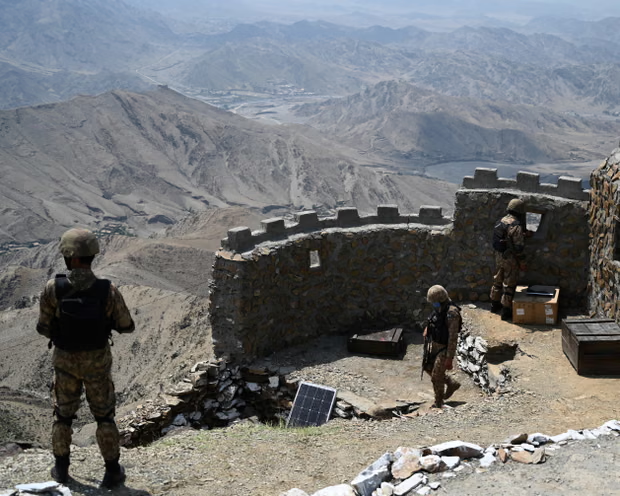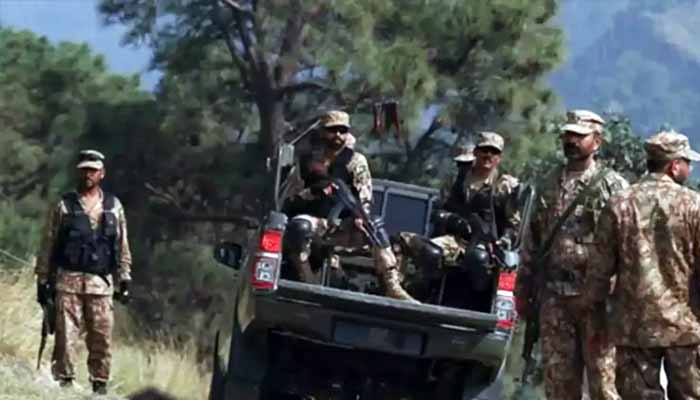In the latest escalation of the Pak-Afghan war, Pakistan says it killed over 200 Taliban and militants after border attacks. The Durand Line has become a flashpoint as Pakistani forces engage across the Pak–Afghan border.
In one of the sharpest escalations to date in the Pakistan Afghanistan war, Pakistani military sources via ISPR report that they’ve killed over 200 Taliban and affiliated terrorists in response to an overnight Afghanistan attack Pakistan. Pakistan says that Taliban forces attacked border posts unprovoked, and in its pak vs afg war response, Islamabad launched air strikes, artillery and raids on Taliban camps across the pak afghan border along the Durand Line. Simultaneously, Afghanistan claims 58 Pakistani soldiers were killed, though Pakistan maintains its own casualty count at 23 troops lost.
The conflict has prompted the closure of major border crossings, including Torkham and Chaman, disrupting trade and heightening regional tensions.
What the ISPR Says: Response, Operations & Claims
According to the military’s media wing, the ISPR, the Pakistani forces not only repelled the Taliban incursion, but also struck back decisively. Their statement asserts:
-
Over 200 Taliban and allied militants were neutralized.
-
Multiple Taliban camps, training sites, and support networks were targeted by precision strikes and ground assaults.
-
21 Taliban border positions were briefly captured, and several were destroyed or rendered inoperative.
-
Actions were taken under right of defense, and efforts were made to minimize civilian harm.
-
Pakistani forces suffered 23 fatalities, and numerous soldiers were wounded.
-
The attacks followed what Islamabad described as an unprovoked escalation by Afghan-based militants across various points of the pak afghan border.
-
Pakistan simultaneously closed crossings along the Durand Line to prevent infiltration and retaliatory attacks.
In Islamabad, the government rallied behind the military’s stance. Prime Minister Shehbaz Sharif condemned the aggression, affirmed that Pakistan would not compromise on security, and reiterated that no provocation would go unanswered.
Afghanistan’s Narrative & Conflicting Casualty Claims
The Afghan Taliban government counters with bold claims: it says it killed 58 Pakistani soldiers and captured several Pakistani border posts in retaliatory operations. Taliban spokesmen also claim only nine of their own troops died in the fighting.
Kabul’s defense ministry issued statements denouncing Pakistan’s alleged air strikes in Kabul and accused Pakistan of violating Afghan sovereignty. They have called for diplomatic recourse and restraint — but have also asserted their capability to respond to any further aggression.
This back-and-forth of claims typifies how the pak afghan war is not just fought on the ground but waged through messaging and international platforms.
Border Dynamics: The Durand Line as a Flashpoint
The Durand Line, the controversial pak afghan border, has again become the theater of conflict. In many segments, it’s poorly demarcated and porous, making it vulnerable to cross-border incursions and surprise strikes.
Among the districts reporting fighting were Kurram, Bajaur, Baramcha, Dir, and Chitral. Pakistan’s military says that unprovoked fire came in from multiple directions.
Taliban reports claim they captured several Pakistani outposts along the Durand Line. Conversely, Pakistani sources say they themselves temporarily held and destroyed Afghan positions across the border.
The conflicting narratives highlight how each side views control of the Durand Line — long contested — as central to their pak vs afg war objectives.
This flare-up didn’t emerge in isolation. In recent months:
-
Pakistan conducted drone strikes in Kabul, reportedly targeting TTP senior figures, killing two important members, though its leader survived.
- Afghan officials have accused Pakistan of air strikes in Kabul and nearby provinces, which Islamabad neither fully confirmed nor denied, claiming only to protect national security.
- On October 10, Pakistan said it eliminated 30 militants involved in an ambush that killed 11 soldiers near the border.The broader context includes Operation Sarbakaf in Bajaur (2025) targeting insurgent bases near the border and previous cross-border skirmishes in 2024–2025.
These developments show an intensifying cycle: militant attacks, Pakistani retaliation, diplomatic escalation, and renewed violence along the pak afghan border.
Implications: Escalation, Diplomacy & Regional Ramifications
Military Posture & Escalation Risk
This incident marks one of the most severe escalations since the Taliban regained power in Afghanistan. If tensions further spiral, we could see more frequent cross-border exchanges or deeper incursions. The pak vs afg war is taking a sharper military dimension, not just covert or localized action.
Diplomatic Pressures & Mediation
Regional powers like Saudi Arabia, Qatar, and Iran have already called for restraint and urged the two sides to return to dialogue. The conflict’s timing — simultaneous with the Taliban’s foreign minister visiting India — raises fears of broader geopolitical maneuvering.
Civilian Safety & Border Communities
Communities near the border are vulnerable. Border closures, shelling, and displacement are immediate humanitarian concerns. Reopening of crossings and restoring order will be critical for everyday trade and lives.
Messaging Wars & Propaganda
Both Islamabad and Kabul are aggressively pushing conflicting casualty figures and territorial claims. This news battle will influence domestic opinion and international perceptions in the pak afghan war narrative.
The latest exchange along the Pak Afghan border reaffirms that the Pak Afghanistan war is far from dormant. Pakistan, through ISPR, claims it has dealt a severe blow to Taliban infrastructure in response to militant aggression, while Afghanistan pushes back with its own version of the conflict. The Durand Line has, once again, turned into a volatile frontier.
As both sides draw lines and intensify their rhetoric, the world watches whether this is a spike in tension or a turning point toward deeper conflict.



